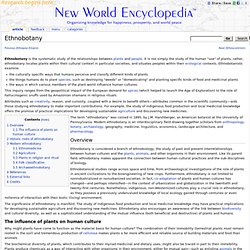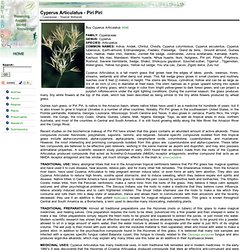

Psychedelia. Indigenous people and the crisis over land and resources. Indigenous groups are now represented globally by a range of international organisations – the United Nations Permanent Forum on Indigenous Issues (UNPFII), the Assembly of First Nations, Survival International, the World Council of Indigenous Peoples, Indigenous Environmental Network – and by many national organisations, along with a host of declarations on indigenous issues by UN agencies and international groups.

Acceptance in Latin American nation states of a multicultural citizenship which is inclusive of indigenous groups has become standard practice on the statute books. A range of rights has been accorded by Central American governments to their indigenous populations. In most cases the recognition is only on paper. Which psilocybin mushrooms grow wild in my area? Throughout the world the species Panaeolus cinctulus (= P. subbalteatus) and several active species of Gymnopilus grow.

Rather than create entries for countries, states and provinces which would then have nothing else listed, it is probably a good assumption that these mushrooms grow in those places not listed. If they are not listed for your area, mentally add it. When researching your mushrooms be aware that many have more than one name. It may be that two names that were thought to be different were shown to describe the same fungus, or that it was moved to a new genus, or a whole host of reasons. For example the mushroom Panaeolus cyanescens was once placed in the genus Copelandia and you will therefore sometimes see it written as Coplandia cyanescens.
Amanita muscaria can be found in all 50 states and in most countries.Though Psychoactive, it is not a psilocybin mushroom so it does not appear in this list. 'Sp.' ArkansasGymnopilus sp.Panaeolus cinctulusPsilocybe cubensis. Multidisciplinary Association for Psychedelic Studies (MAPS) Vapours and visions: Religious dimensions of DMT use. Table of Contents List of Figures Chapter 1 Introduction Synopsis Chapter 2.

Ayahuasca Shipibo Shamanic healing center and retreat, Tarapoto Peru, Medicine plant Dietas and ceremonies. Over the last few months, everything has changed in our perception of volunteers.

Now, volunteers are our family and an integral part of the community that we are building here at TierraMitica. We now understand that our community is as important as the healing center. Volunteers now have to fulfill four criteria : To have undertaken a Mythic Voyage so that they are healed and free of a big part of their past, their wounds and dark energies, to have as their primary intention and a full priority their happiness, to be willing to put full energy into learning Spanish and to be accepted unanimously by every member of the community. They do not need to have any special skills, attitude and the wish to live in Art and Love whatever they are doing are the qualities that make a volunteer here a part of our community. Ethnobotany. From New World Encyclopedia Ethnobotany is the systematic study of the relationships between plants and people.

It is not simply the study of the human "use" of plants; rather, ethnobotany locates plants within their cultural context in particular societies, and situates peoples within their ecological contexts. Ethnobotanists examine: the culturally specific ways that humans perceive and classify different kinds of plantsthe things humans do to plant species, such as destroying "weeds" or "domesticating" and planting specific kinds of food and medicinal plantsthe ways in which various members of the plant world influence human cultures. This inquiry ranges from the geopolitical impact of the European demand for spices (which helped to launch the Age of Exploration) to the role of hallucinogenic snuffs used by Amazonian shamans in religious rituals.
The term “ethnobotany” was coined in 1895, by J.M. Overview The significance of ethnobotany is manifold. Ethnobotany Vault. Bishop Museum - Ethnobotany Database. Ethnobotany. Ayurvedics, Herbology, Ethnobotany. Ethnobotanical Park. The volunteer program at the Omaere Ethnobotanical Park is somewhat unstructured and oriented toward keeping this beautiful botanical park working as well as attending to the unpredictable arrival of visitors.

The volunteer director for this program is Chris Canaday from California, one of the world leaders in UDDT’s who has made it his life´s mission to improve water sanitation and human waste disposal in the Amazon basin of the Ecuadorian orient. Volunteers will also help make natural medicine and help setup sanitation systems for indigenous communities which are incredibly important to the health of the Amazonian rivers in the area. The Ethnobotanical Stewardship Council. Writing Scientific Project Proposals In Ethnobotany: Tips and tricks. Ethnobotany Research & Applications www.ethnobotanyjournal.org/vol9/i1547-3465-09-325.pdf tivated and demonstrate the participants’ skills in criticalthinking.

Finally, the objectives need to be reasonable: itis important to be sure to have the necessary resources toobtain the expected results and that they are achievable within the specied time period. State of the Art. Ethnobotany. Plants and People. Preserving Ancient Knowledge. FAMILY: CyperaceaeGENUS: CyperusSPECIES: ArticulatusCOMMON NAMES: Adrue, Andek, Chintul, Choufa, Cyperus corymbosus, Cyperus esculentus, Cyperus tuberosus, Earth-almond, Erdmandelgras, Fladaks, Flatsedge, Gland de terre, Ground almond, Guinea rush, Hadrue, Haeo chin, Ibenkiki, Jointed flat sedge, Jordmandel, Juncia avellanada, Kamaleji, Karihi, Kashuur, Ma niao, Mandassi, Masho huaste, Nihue huaste, Nuni, Nutgrass, Piri piri, Piripiri, Piriprioca, Rushnut, Savane tremblante, Sedge, Shakó, Shokuyou gayatsuri, Souchet-sultan, Tigernut , Tijgernoten, Water-grass, Yellow nut-grass, Yellow nut sedge, You sha cao, Zacoo, Zigolo dolce, Zulu nut.

Cyperus Articulatus is a tall marsh grass that grows near the edges of lakes, ponds, swamps, rivers, streams, wetlands and other damp soil areas. This flat sedge grass grows in small clusters and routinely reaches over 6 feet (2 meters) in height. Preserving Ancient Knowledge. Preserving Ancient Knowledge. Rapa Dos Indios, which means "Indian snuff", is believed to have been made from the fruit of an enormous forest tree, Maquira sclerophylla (known also as Olmedioperebea sclerophylia), and is part of the fig family.

In the Pariana region of the central Amazon in Brazil, the indians formerly prepared a hallucinogenic snuff of the dried fruits. The snuff was taken in tribal ceremonials, but encroachment of civilization has obliterated it's use. The preliminary chemical investigations made so far have not indicated what the active principle may be, though the tree is known to have cardiac glycosides. The cardiac glycosides are an important class of naturally occurring drugs whose actions include both beneficial and toxic effects on the heart. Plants containing cardiac steroids have been used as poisons and heart drugs at least since 1500 B.C. Preserving Ancient Knowledge. Biochemistry The principal active biochemicals are nicotine, nornicotine and anabasine.

The proportion of each varies greatly among the species and varieties. As many as eight other pyridine alkaloids occur in lower concentrations. Comments. Preserving Ancient Knowledge. FAMILY: MalpighiaceaeGENUS: BanisteriopsisSPECIES: CaapiCOMMON NAMES: Ayahuasca Vine, Bejuco de Oro, Biaxa, Boa Vine, Caapi, Dapa, Doctor, Kaapi, Kahi, Maridi, Mihi, Natema, Nepe, Pinde, Totenliane, Vine of the Dead, Vine of the Soul, Yage, Yahe, Yaje, Yaxe. Ayahuasca is the name given to both the central ingredient of a South American Indian psychoactive potion (a species of the Banisteriopsis genus) and the potion itself. Almost invariably other plants are mixed together with the jungle vine Banisteriopsis; about a hundred different species are known to have been added to the potion at different times and places.
Preserving Ancient Knowledge. Preserving Ancient Knowledge. Family: Lamiaceae (Mint)Genus: SalviaSpecies: DivinorumCommon Names: Diviner’s Sage, Hierba de la Pastora (Herb of the Shepherdess), Hierba de la Virgen (Herb of the Virgin), Hierba Maria (Mary’s Herb), Hoja de la Pastora (Leaves of the Shepherdess), Lady Salvia, Magic Mint, Pipiltzintzintli, Sage, Salvia, Seer’s Sage, Ska Maria Pastora (Leaves of Mary the Shepherdess), Ska Pastora (Leaves of the Shepherdess), Yerba Maria (Mary’s Herb). Salvia Divinorum is a perennial labiate used for curing and divination by the Mazatec Indians of Oaxaca, Mexico. We purchase all of our Salvia plants, extracts and leaf from only source we trust to BUY SALVIA DIVINORUM online.
The psychotropic effects the plant produces are compared to those of the other hallucinogens employed by the Mazatecsa herbaceous perennial that grows well over 3 feet (1 meter) tall. The plant’s leaves grow in a symmetrical, uniform pattern, and have equally distributed nodes along a singular stem. Clebsch, Betsy. 2008. Encyclopedia of Cultivated Plants: From Acacia to Zinnia [3 Volumes] Medical anthropology films. This list of medical anthropology films was contributed by Rebecca Prentice (Goldsmiths College, University of London). Please feel free to add suggestions. There are a number of websites worth looking at for excellent health-related films that are available online for free (but may not be accessible in all countries): · Youtube: (Recommended from youtube: “Vulvagraphics” and “Big Bucks, Big Pharma: Marketing Disease and Pushing Drugs”) One contributor recommended three films that have been used together for a talk on Anthropology, Death and Dying and Medicine:
Search > Science : Biology : Botany : Ethnobotany. Lamiaceae, Salvia divinorum, Ska Maria Pastora, diviner’s sage – Sierra Mazateca, Oaxaca, Mexico. I found this growing in a botanical garden in San Francisco today, so I thought I’d post an article since I don’t have one at present… Salvia divinorum is native to the Sierra Madre Oriental, Oaxaca, Mexico, where it grows in tropical rainforests at 300 – 1800 meters. Because of its limited geographic habitat, S. divinorum belongs to the rarest of psychoactive plants. That said, it is grown by plant lovers all over the world, propagated easily by cuttings. Ska Maria Pastora, Hierba de la Pastora, Hierba de la Virgin, Pipiltzintzntli, Diviner’s Sage (of the diviners) , these are all names for Salvia divinorum a sage species of the Lamiaceae family (which includes mints, sages, basil, and many other well known plants). S. divinorum has been used by the Mazatec Indians of Mexico as a substitute for psychoactive mushrooms.
Ritual use of Salvia divinorum is very similar to that of mushroom rituals. The primary form of ingestion is chewing fresh leaves. Like this: Like Loading... (ănˌthrə-pə-jĕn) European Society of Ethnopharmacology: Links.